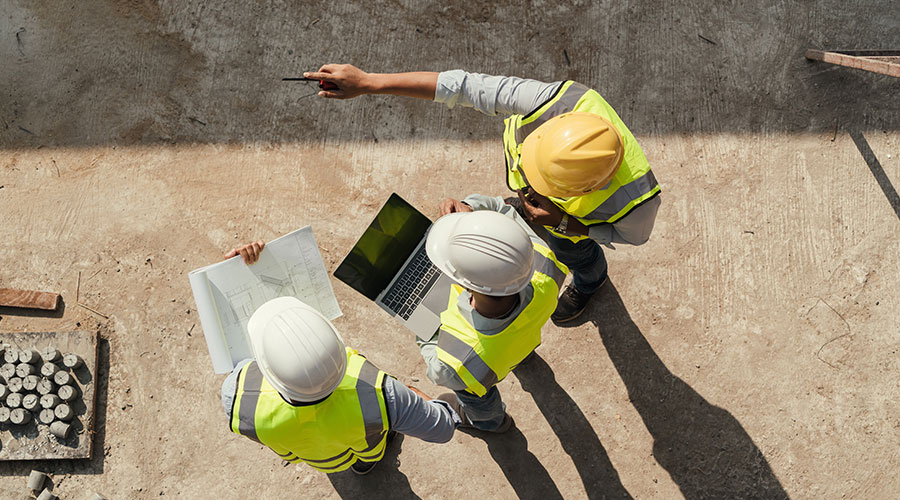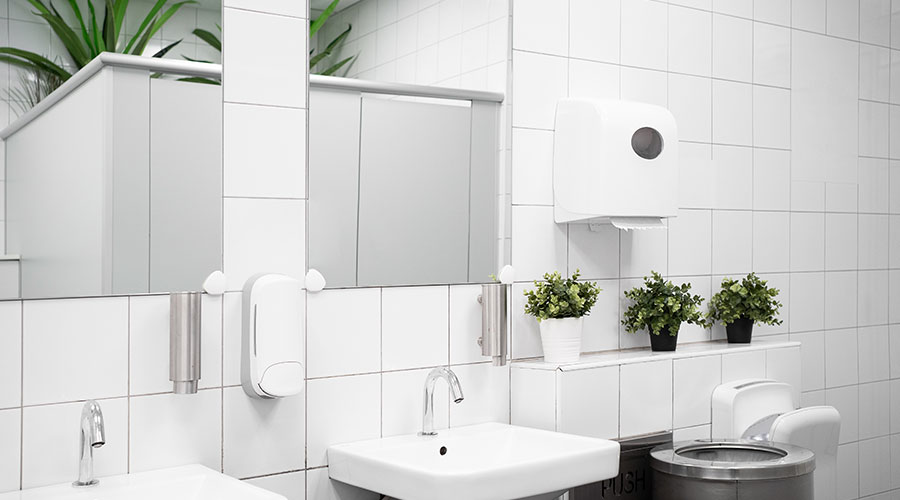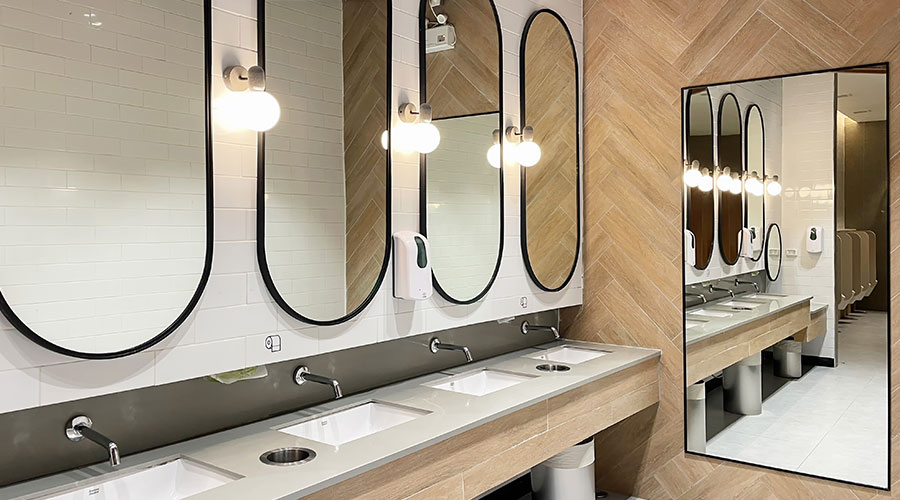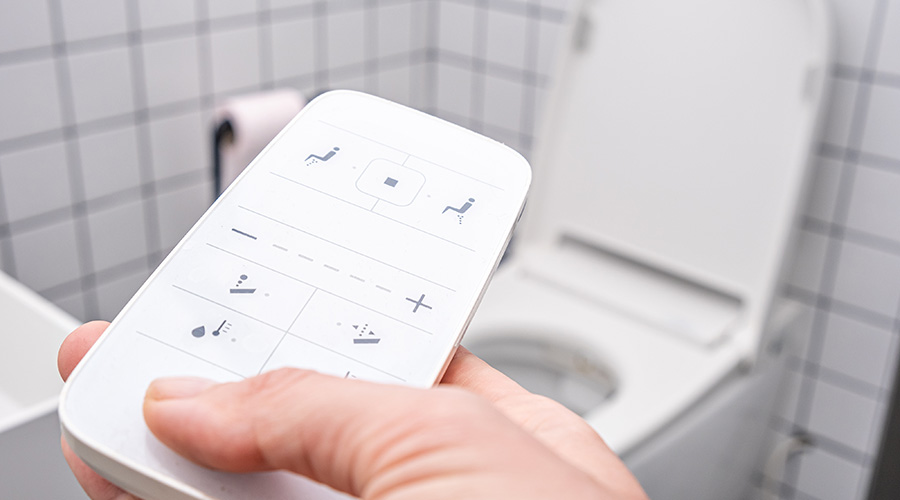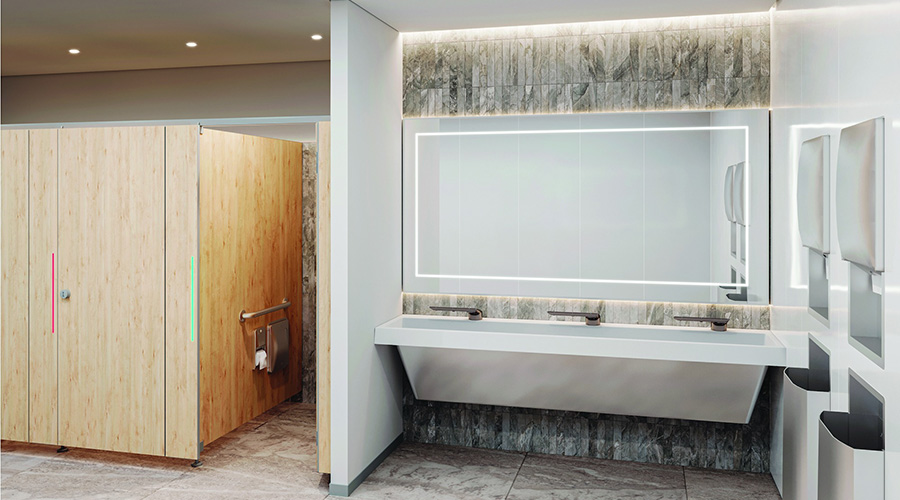Return-to-Work's Influence on Restroom Design
Office occupants desire privacy when stepping away to use the restroom.
For so long, restrooms were an afterthought in the design process. As long as it was usable, it was functionable. But as companies continue to lure employees back to the office, all spaces need to be accounted for and designed with employees in mind. Knowing return to work may be hard for employees, many companies have resorted to renovating restrooms to ensure that the workplace feels just as comfortable as they are at home.
“I don’t think [facility executives] always necessarily considers restrooms to be the amenity that it is... Why not design it in a really beautiful way?” Josie Vanore, interior designer at HED says.
Very rarely is a restroom memorable. If it is, it’s usually not for positive reasons. According to a 2024 study by Bradley Company, 60 percent of respondents believe an unclean restroom shows poor management, with 56 percent saying that they leave the company with a tarnished opinion of the facility. Around half of respondents also said that if they experienced a particularly dirty restroom, they would vow to not return to the business.
“Depending on the age of facility, some can be very nice and have old-fashion ornate lobbies, or they are all brand new,” Joel Bernhard, principal and CFO of ikm architecture says. “Then you go into the toilet room and go ‘yeah, this needs some work.’ It’s often not just maintenance issues — it's long-term problems. They need the most cleaning and the most durable finishes. They have the highest probably of graffiti. Keeping those up to date — particularly with upgrading the finishes and refreshing the fixtures. It’s what a lot of people remember.”
Prioritizing privacy
Restrooms serve more purposes than what is typically thought of. It’s where employees step away from their work and get a moment of privacy and relaxation. People utilize restrooms to make adjustments to their appearance, send a quick text, or even cry. It might be silly to think of restrooms as an amenity, but it’s one of the most important things that a company can offer its employees.
“Pay attention to what the end user is going to experience while in it,” Sharon Henderson, associate principal, Lawrence Group says. “Each client is going to have different goals to meet. It is important to try to use solutions that gives each person as much privacy as possible.”
There are so many components that go into giving users the utmost sense of privacy within a restroom. Entrances and exits should be a certain distance from the fixtures, and the vanity area should be separate from that so that there isn’t a congestion issue if lines were to form.
“Everything goes back to privacy and separating out the space as much as you can,” Vanore says.
It is often recommended to have a gender-neutral restroom included in building designs as some codes require more fixtures depending on the building type and the particular municipality. This amplifies the privacy aspect that many company owners are seeking, but also benefits employees with disabilities and those who identify within the LGBTQ+ community.
“You still want to have a couple of private toilet rooms if someone is in a wheelchair or simply need to use a toilet and have access to a sink in a private space,” Bernard says. “Someone might have a colostomy bag and might want to have access to a private sink. It’s important to make sure you’ve got other options available, but we’re starting to see that more and more separation by gender isn’t so important.”
Still, gender neutral restrooms have become politicized in recent years. Some members of the LGBTQ+ community have found that using a gender-neutral restroom at the workplace makes them stand out more, especially if the facility is in a different area than the gendered restrooms are.
It is possible to get around the stigma of the term gender neutral restrooms by labeling them “single stalls” or “family restroom,” but the latter doesn’t go hand-in-hand with the workplace. Ultimately, it comes down to preference on how to label their facilities. Vanore suggests using “single user,” indicating that it is open for all users.
Communicating to managers that gender neutral restrooms need to be code compliant is another way to get around the stigma of the facilities. Henderson explains that explaining that there needs to be enough fixtures for everyone in the company helps take away any emotionally-charged feelings from the matter.
“It’s pretty hard to make an individual private toilet room not gendered,” Bernard says. “I think having really good signage on the outside of toilet rooms and not just men with a handicap symbol or women with a handicap symbol. It is best to eliminate language that has become emotionally charged.”
Mackenna Moralez is the associate editor of the facility market and the host of the Facilities in Focus podcast.
Related Topics:






